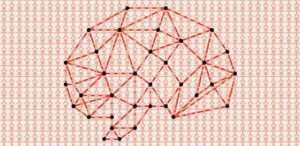Why Teenaged Brains Develop Mental Health Issues

Researchers are looking at the larger picture to address mental health issues in adolescence. Credit: The District
Researchers at the University of Cambridge have used brain scans to explain why the first signs of mental health issues, such as schizophrenia and depression, occur in adolescents, according to SBS.
A feature in the University of Cambridge news discussed this research. Brain imaging can help determine how brain changes can illuminate common mental health problems in adolescence. Ages 14 to 24 are the risky years, according to Professor Ed Bullmore, head of psychiatry at Cambridge.
Depression, low self-esteem, self-harm, and paranoia can intensify during these years. For about one percent, the mental illness is so severe that people can’t distinguish reality from delusions, a key trait of schizophrenia. This mental illness is considered the worst, and probably means a lifetime of dependence on medication. However, this is not always the case. Bullmore said that some cases last only a few years.
Bullmore is part of a team that wants to find out where and in what timeframe mental health issues will show up on brain scans. This goal, though not easy, could be helpful to patients. Instead of being made to believe that people are personally responsible for symptoms, brain scans show there is a biological basis.
There is no one area that is responsible for schizophrenia. Scientists need to look across the whole brain and how the areas are connected to each other.
The researchers at Cambridge are using magnetic resonance imaging, both structural and functional to study the brain.
Bullmore said that the current research helps explain why mental health issues typically manifest in adolescence. It is during those years that those areas of the brain are developing most rapidly. By comparing brain scans of people of different ages, researchers found that the outer regions of the brain shrink in size, becoming thinner.
The study was published Tuesday in the Proceedings of the National Academy of Sciences.
In schizophrenia, the hubs of the brain that are connected are negatively affected and the wiring diagram goes awry. Researchers can’t predict future outcome from brain scans, but the hope is to someday that it will give us some guidance towards positive interventions.
“The adolescent brain is still a bit of a black box. But it is a big step forward that we can now see healthy human brain development much more clearly, especially with the next-generation brain scanners coming to Cambridge soon. It’s very exciting to think that we should then be able to understand and predict the pathways of brain network development that lead to schizophrenia,” Bullmore told University of Cambridge news.